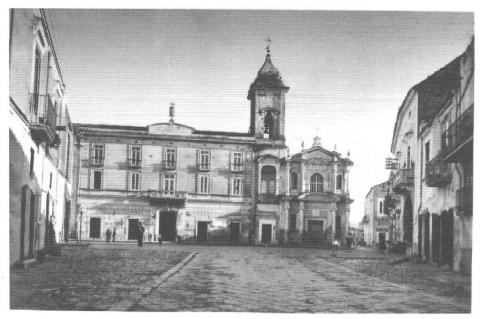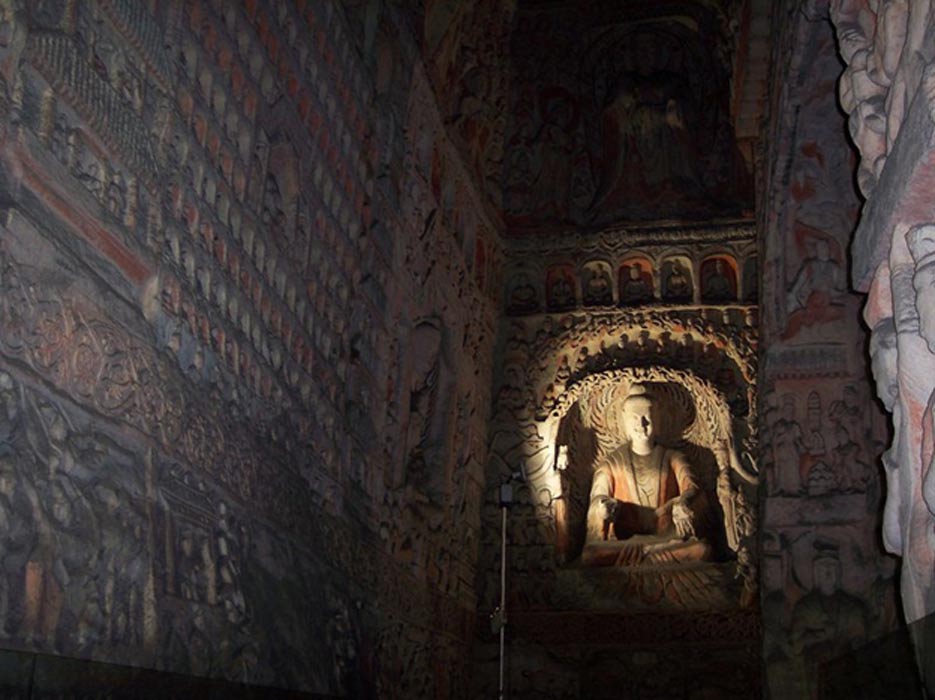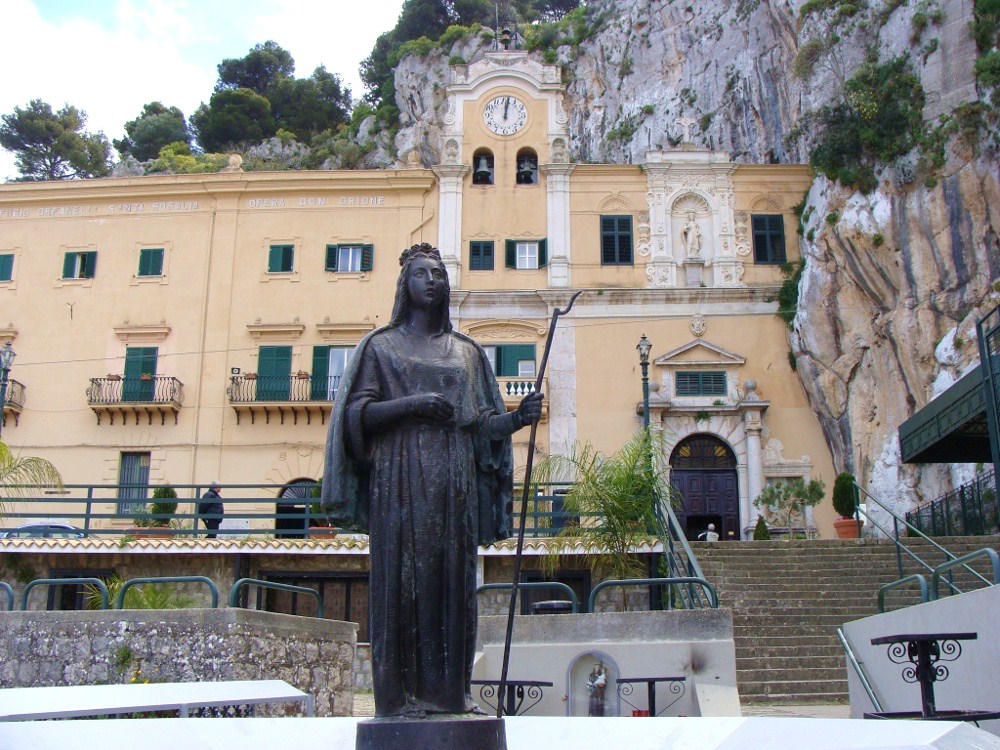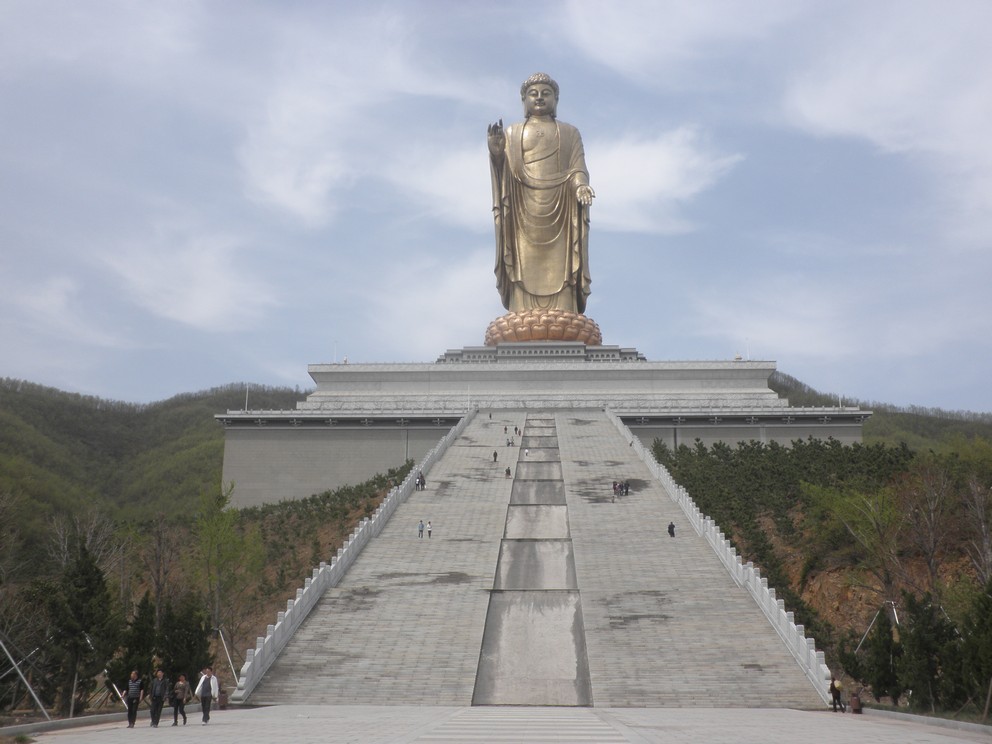The Romanesque Duomo, the Cathedral of St. Mary of the Assumption, begun around 1175 on the site of the earlier church destroyed in 1155 by Frederick Barbarossa, was consecrated by Pope Innocent III in 1198 and finished between 1216 and 1227.
The 11th-century church, destroyed by the emperor, also stood on an earlier 8th- or 9th-century church dedicated to St. Primian, of which the crypt beneath the present Chapel of Relics has been preserved.
The present facade represents the result of an enlargement of the same, which took place around 1200. The outer rosoncini of the second order and the three rosoncini, the ogival blind niches and the mosaic of the third order were then added. The latter, signed by a certain Solsternus (1207) who instead of the usual "magister" preferred to call himself "doctor," depicts "Christ blessing enthroned between the Madonna and St. John the Evangelist."
Umbria Online The central rose window, belonging to the 12th-century construction phase, is one of the richest in Umbria. It is set in a square bearing in its corners the symbols of the four Evangelists, supported ideally, in turn, by a blind gallery of five small columns and two telamons. The style of the colonnettes of the cornice above the rose window harmonizes strikingly with that of the portico added in 1491-1504 by Ambrogio di Antonio Barocci of Milan and Pippo di Antonio of Florence, with five arches flanked by pulpits. At its side rises the massive 12th-century bell tower, also documented as having been used for defense purposes, built of large, square ashlars, some of which are rubble from earlier episcopal structures.
The belfry was added in 1512-15 to a design by Cola da Caprarola.
Next to the central portal, from the construction period before 1198, richly carved, is the walled entrance to the 9th-century cathedral, St. Primian.
In 1638 Cardinal Francesco Barberini, by Luigi Arrigucci, had the interior radically transformed in the Baroque style, as also desired by his uncle, Pope Urban VIII (Maffeo Barberini), who had been bishop of Spoleto from 1608 to 1617. A bronze bust of him, by Lorenzo Bernini (1640), hangs above the portal on the counterfacade. During the Baroque rebuilding, the aisles and transept were enlarged. Only the mosaic floor of the nave and the central apse remained of the Romanesque layout.
In a further 19th-century intervention, Giuseppe Valadier, the Classicist architect of the Piazza del Popolo and the Pincio Hill in Rome, created the altars and doors. On the right immediately opens the Chapel of Bishop Costantino Eroli, used until 1845 as a baptistery, with fine frescoes by Pinturicchio (1497). An adjoining Eroli burial chapel leads to the Chapel of the Assumption, begun by Costantino Eroli and finished by his successor Francesco Eroli.
Apse with frescoes by Filippo Lippi The decoration of the cross vault has recently been attributed to Giovanni da Spoleto (early 14th cent.), while the wall frescoes are by Jacopo Siciliano (1540-50). On the right side of the right arm of the transept is the sepulchral monument of Giovanni Francesco Orsini by portico architect Ambrogio Barocci (1500), originally from the Orsini Chapel and here badly reassembled. Opposite is the sepulchral monument of Fra’ Filippo Lippi (*1406†1469), who died here in Spoleto while executing the frescoes in the apse (1467-69). The monument, designed by his son Filippino Lippi and commissioned by Lorenzo de Medici, was not executed until 1490 by an unknown Florentine sculptor.
Next comes the sacristy and then the Chapel of the Most Holy Icon, built in place of the old sacristy by Giovanni Battista Mola in 1626 to house, in an altar of precious marbles, the Icona, an 11th/12th-century Byzantine tablet depicting the Madonna in the iconographic type Haghiosoritissa, worked in Byzantium, as an inscription on the edge of the gilded copper foil testifies. It was given to the city by Emperor Frederick Barbarossa in 1155 as a sign of peace after he destroyed the cathedral. In the central Romanesque apse is the stupendous cycle of frescoes by Filippo Lippi, assisted by Fra’ Diamante and Pier Matteo d’Amelia, who finished the "Nativity," which was interrupted by the master’s death, and created the "Annunciation," the "Dormitio" and the "Coronation of the Virgin."
Like the other altars, the high altar, with four columns of oriental granite, a gift from Pius VI, is Valadier’s work.
To the left of the chancel is the Chapel of the Sacrament, built in the late 16th century and decorated in the late 18th century. An early enlargement of the transept, the 14th-century Chapel of St. Anne, decorated entirely in fresco in 1597, was cut off during the 1644 enlargement, and at the end of the last century, these frescoes were removed to bring back into view the earlier 14th- and 15th-century decoration.
On the side of the left aisle is the Chapel of Relics, added in 1540 to store the Icon and other precious vestments in carved and inlaid cabinets, of which only the front parts remain, because the bodies were used to make the choir benches from them. Also by the same authors, Giovanni Andrea di Ser Moscato and Damiano di Mariotto, are the wooden carvings and the altar dossal (1545-54).
After the altars by Valadier, one of the most important works in the cathedral was placed in the niche of the left aisle: the "Crucifix," a painted parchment, applied on panel, by Alberto So[tii] (1187), from the Church of Ss. John and Paul, where frescoes by authors from the circle of this master were unearthed













